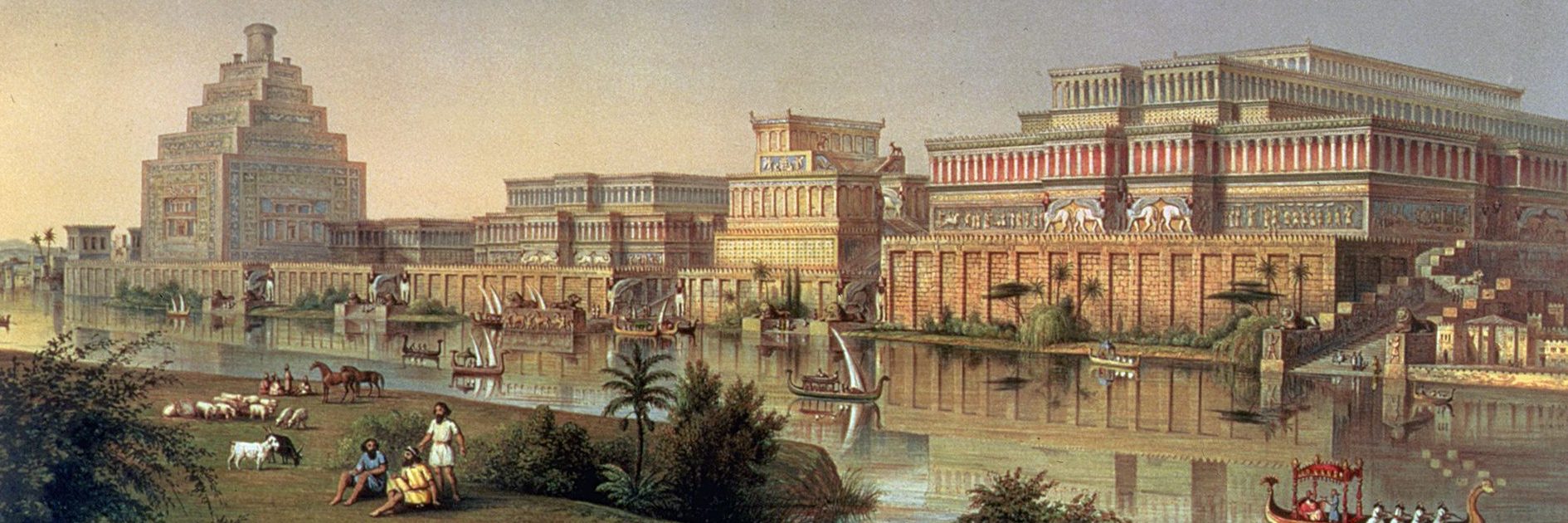Nicholas Guild’s novel, The Assyrian
Nicholas Guild’s The Assyrian (1987) is a work of historical fiction set in ancient Assyria (~700 BCE) that follows two real-life half-brothers from different mothers, Tiglath and Esarhaddon, both sons of the infamous King Sennacherib, one of the mightiest rulers of the Neo-Assyrian empire. Guild explores their childhood friendship, from growing up in the royal palace and discovering “girls” to the rigors of military training before presenting the novel’s major conflict: Though both boys are sons of Sennacherib, Esarhaddon is decreed by the king’s priest as the next monarch in succession. Though history clearly reveals the outcome, the novel dramatically examines the tension this decree causes: Esarhaddon becomes jealous of Sennacherib’s preference for Tiglath (due to his physical prowess) and anxious about his fate, while Tiglath – though he understands that he could indeed be king should he sabotage Esarhaddon – resigns himself to a warrior’s life. However, when Tiglath learns that his childhood crush, Esharhamat, should be wed to Esarhaddon, he can remain at the palace no more and departs in much grief for military service. This sets up the climax of the novel, the final reckoning between the increasingly inept Aserhaddon and the now mighty warrior Tiglath, as both men gain power and Esharhamat becomes the ultimate prize.
Guild is an impressive author who wrestles with universal themes such as acceptance/refusal of fate; friends turned enemies; divine intervention; the hero turned outcast; and even the classic love triangle to name but a few. Because these themes are so accessible, the story and its characters quickly take on a contemporary feel, allowing me to forget that the characters exist in an ancient context and to muster a great amount of empathy for them. Though we are presented with italicized Akkadian terms, authentic character and place names, and situations/values foreign to the modern reader, Guild’s style is to keep his language simple though descriptive and to keep the focus squarely on the interior thoughts of Tiglath, the narrator. This facilitates the reader’s ability to side with the protagonist-hero and view the story from his point of view. Guild writes with great sensitivity and description, using the senses to aid the reader’s connection and tapping into the emotional worlds of his characters. He also handles Assyrian culture successfully with elaborate descriptions of dwellings, rituals, clothing, food, etc. which serves as a strong example for my own writing about ancient Assyria (and underscoring the amount of research required to accomplish this successfully).
At its heart, The Assyrian is another boy finds girl, boy loses girl, boy tries to get girl back despite jealous brother trope with numerous other recognizable archetypal situations and characters supporting this plot. For example, we learn early on that Tiglath’s mother is a foreigner from Athens; the issue that Guild makes of this serves as foreshadowing for Tiglath that at some point he too will feel/be viewed as an outsider, and indeed this becomes a major plot point.
I haven’t read any of Guild’s other work, though I understand that this work of historical fiction was a lauded departure from his award-winning political thrillers. Though I selected the book because of its setting in ancient Assyria, much to my surprise it shared some strong similarities with other novels I’ve read recently, namely friendship tested by hardship as a major trope.

